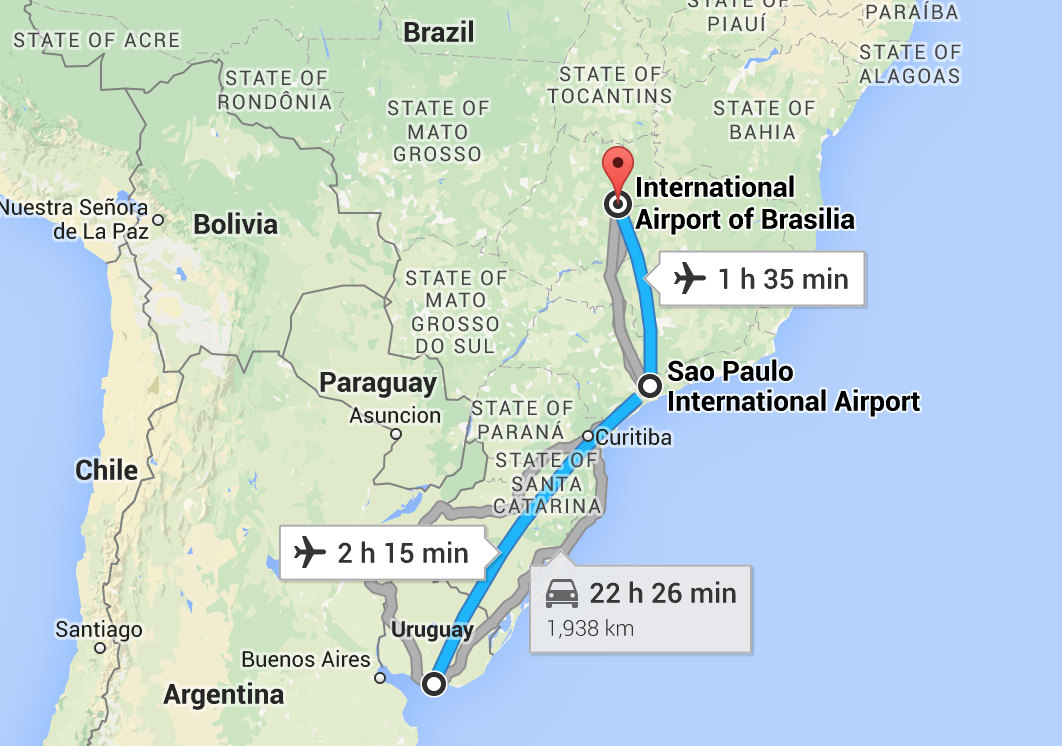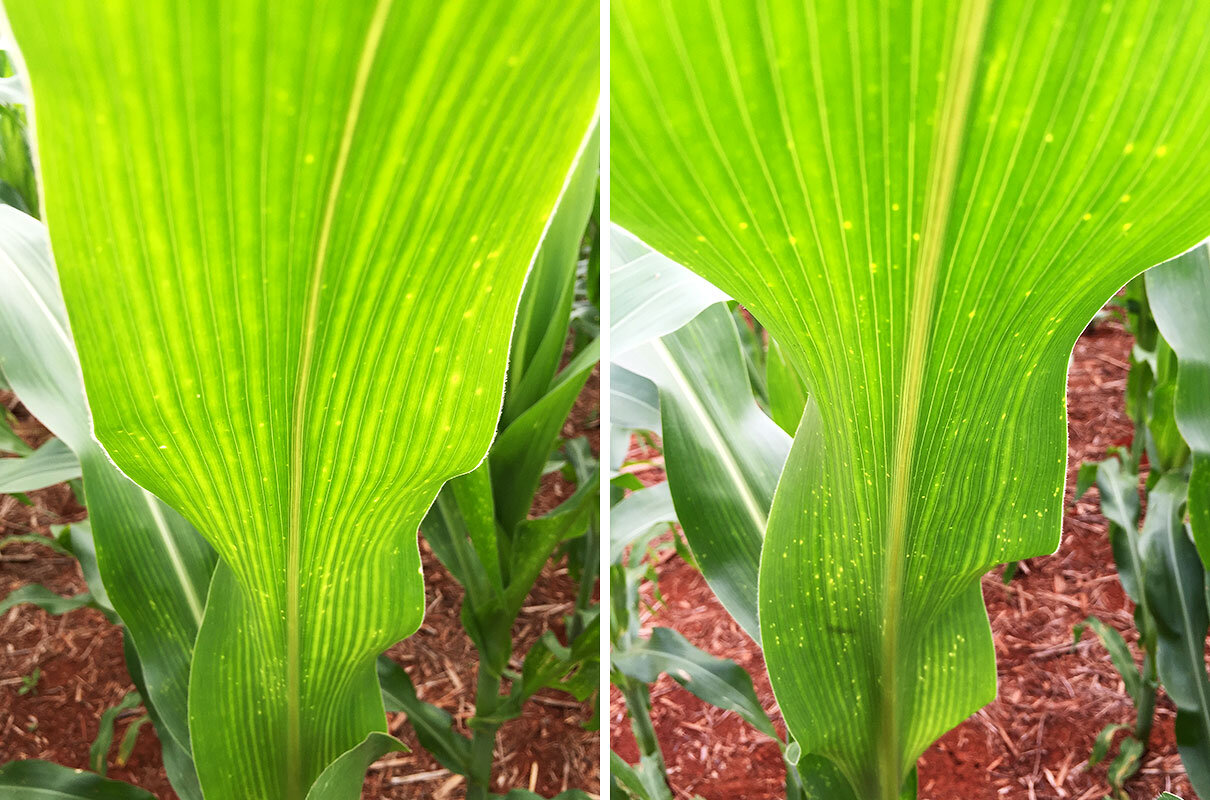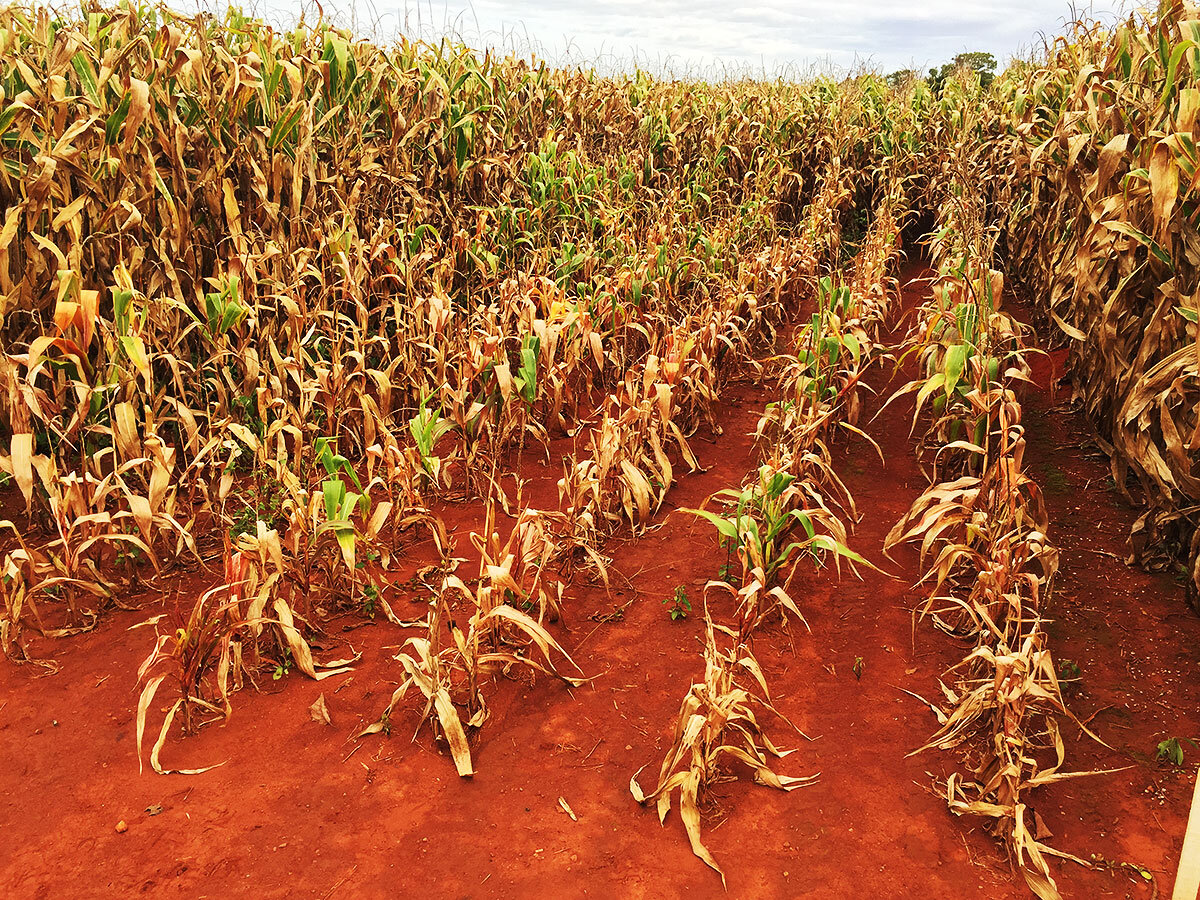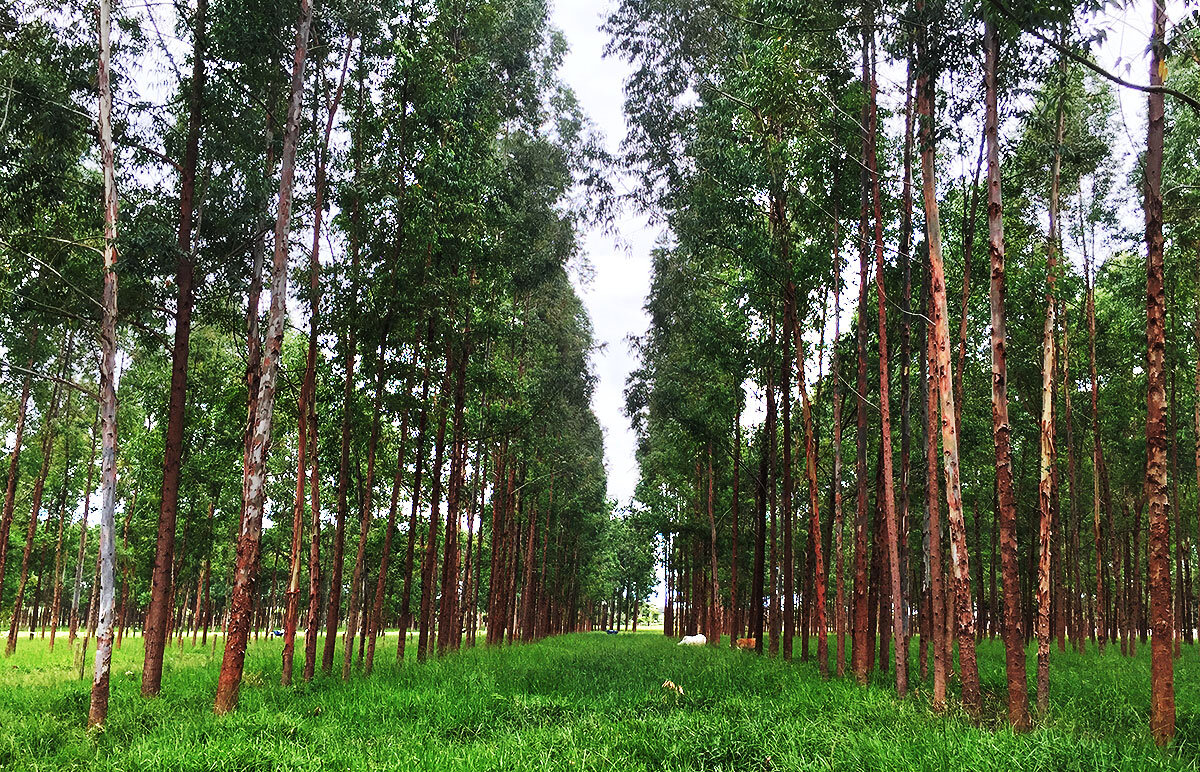Day 64 - How no-till soils are different in Brazil
 Sao Paolo airport has four terminals. In the hour and a bit I spent trying to find a sim card, some reasonably priced Brazilian currency, and a bus to the Ibis hotel, I visited them all, some more than once. It's a fun way to end the day, especially at 11pm. The next morning I had to fly out early to Brasilia, and luckily I set my alarm as the hotel forgot the wake-up call.In the afternoon I visited the Embrapa Cerrado centre for a very quick but still useful couple of hours. Embrapa is the Brazilian government run agricultural research organisation, which is apparently very well thought of by the farmers - probably a world first?
Sao Paolo airport has four terminals. In the hour and a bit I spent trying to find a sim card, some reasonably priced Brazilian currency, and a bus to the Ibis hotel, I visited them all, some more than once. It's a fun way to end the day, especially at 11pm. The next morning I had to fly out early to Brasilia, and luckily I set my alarm as the hotel forgot the wake-up call.In the afternoon I visited the Embrapa Cerrado centre for a very quick but still useful couple of hours. Embrapa is the Brazilian government run agricultural research organisation, which is apparently very well thought of by the farmers - probably a world first? The land here has come out of what they call Cerrado, which is a type of scrub land, but with some tall trees as well. The soil is very deep (they have found roots going down over 4m) and physically well structured. However it is naturally pretty low in fertility, with a natural SOM level of 3-3.5%, and very little in the way of nutrients. It's also got a pH of 4, and some problems with aluminium toxicity. As a result of this, there are large responses to the standard NP&K fertilisers, and gypsum also has a large beneficial effect both on soil structure & rooting, as well as feeding the plant sulphur. If you ignore these chemical inputs, and farm with tillage, it's possible to drop the SOM to under 0.5% within five years.They've done quite a bit of work on no-till, which has produced an average yield benefit over the long term of 10%. In some years, growing soya, it has been as high as 40%. They put this difference down to the increased SOM levels under no-till; after 11 years, the tillage plots have 25% less carbon per hectare. This makes a difference with nutrient uptake efficiency in general, but they have specifically tested what happens to organic phosphorus levels - this is the type of phosphorus that is easily utilised by the plant. After 10 years of no-till the organic P is 6% higher, and after 17 years that goes up to 26%.
The land here has come out of what they call Cerrado, which is a type of scrub land, but with some tall trees as well. The soil is very deep (they have found roots going down over 4m) and physically well structured. However it is naturally pretty low in fertility, with a natural SOM level of 3-3.5%, and very little in the way of nutrients. It's also got a pH of 4, and some problems with aluminium toxicity. As a result of this, there are large responses to the standard NP&K fertilisers, and gypsum also has a large beneficial effect both on soil structure & rooting, as well as feeding the plant sulphur. If you ignore these chemical inputs, and farm with tillage, it's possible to drop the SOM to under 0.5% within five years.They've done quite a bit of work on no-till, which has produced an average yield benefit over the long term of 10%. In some years, growing soya, it has been as high as 40%. They put this difference down to the increased SOM levels under no-till; after 11 years, the tillage plots have 25% less carbon per hectare. This makes a difference with nutrient uptake efficiency in general, but they have specifically tested what happens to organic phosphorus levels - this is the type of phosphorus that is easily utilised by the plant. After 10 years of no-till the organic P is 6% higher, and after 17 years that goes up to 26%. Like in Argentina & Uruguay, here in Brazil they are just starting to wake up to the idea of cover crops. One trial compared a standard tillage and summer fallow method (the traditional way) against using no-till and a winter cover crop. The traditional method required 25t/ha of carbon to be put onto the surface to retain 1t/ha in the soil. No-till with a millet cover crop needed 12t/ha to retain the same 1t/ha, and using mucuna (a legume you will no doubt remember from Day 61) meant that number dropped to 7t/ha. The theory here is that because the creation of SOM needs nitrogen, the process is more efficient when there is a legume in the ground. However, the millet produced over double the biomass of the mucuna, so although it is less efficient, if you want to build SOM fast, that (and probably added fertiliser) would be the way to go. It might seem fairly obvious that trying a mix of the two plants might be a good idea, but I'm not sure South America is ready for that concept just yet.
Like in Argentina & Uruguay, here in Brazil they are just starting to wake up to the idea of cover crops. One trial compared a standard tillage and summer fallow method (the traditional way) against using no-till and a winter cover crop. The traditional method required 25t/ha of carbon to be put onto the surface to retain 1t/ha in the soil. No-till with a millet cover crop needed 12t/ha to retain the same 1t/ha, and using mucuna (a legume you will no doubt remember from Day 61) meant that number dropped to 7t/ha. The theory here is that because the creation of SOM needs nitrogen, the process is more efficient when there is a legume in the ground. However, the millet produced over double the biomass of the mucuna, so although it is less efficient, if you want to build SOM fast, that (and probably added fertiliser) would be the way to go. It might seem fairly obvious that trying a mix of the two plants might be a good idea, but I'm not sure South America is ready for that concept just yet. That was the first half an hour outside, the second was spent looking at an interesting agroforestry scheme. Some of the land has been very badly degraded by over-grazing and poor pasture management, to the point where it is hardly productive any more. One of the solutions Embrapa is looking at is to use crops, grass and trees to turn it around. Also, since us Europeans chopped all our trees down long enough ago that it doesn't count, we've told the Brazilians they can't do the same to the Amazon. Now they need to find other ways to make their flat pack furniture, and this might be a solution.Eucalyptus are planted in rows, and for the first two years they can grow three crops per year between the trees: first comes soya, and then maize, both of which can go from planting to harvest in 100 days. A cover crop is planted into the standing maize, so it is ready for grazing immediately after harvest. The same thing happens the second year, except the cover crop then becomes a permanent pasture, as in the photo above. Cattle will graze this for 10-15 years, by which time the trees are tall enough to cut. Eucalyptus has two characteristics which make it ideal for this application. It is very fast growing (in this climate it can average 6m per year), and it will also regrow after the wood has been harvested. Man-sized-cut-and-come-again. Now that the shade has been temporarily removed it's possible to get in another year or two of cash crops before the trees are too big, and it turns back in to grazing. So the cycle continues...On a different subject, if you're looking for something cheery to watch, don't go and see I Am a Girl, although it is a good documentary. If you do see it, and still feel a bit too upbeat, maybe try Once Were Warriors.
That was the first half an hour outside, the second was spent looking at an interesting agroforestry scheme. Some of the land has been very badly degraded by over-grazing and poor pasture management, to the point where it is hardly productive any more. One of the solutions Embrapa is looking at is to use crops, grass and trees to turn it around. Also, since us Europeans chopped all our trees down long enough ago that it doesn't count, we've told the Brazilians they can't do the same to the Amazon. Now they need to find other ways to make their flat pack furniture, and this might be a solution.Eucalyptus are planted in rows, and for the first two years they can grow three crops per year between the trees: first comes soya, and then maize, both of which can go from planting to harvest in 100 days. A cover crop is planted into the standing maize, so it is ready for grazing immediately after harvest. The same thing happens the second year, except the cover crop then becomes a permanent pasture, as in the photo above. Cattle will graze this for 10-15 years, by which time the trees are tall enough to cut. Eucalyptus has two characteristics which make it ideal for this application. It is very fast growing (in this climate it can average 6m per year), and it will also regrow after the wood has been harvested. Man-sized-cut-and-come-again. Now that the shade has been temporarily removed it's possible to get in another year or two of cash crops before the trees are too big, and it turns back in to grazing. So the cycle continues...On a different subject, if you're looking for something cheery to watch, don't go and see I Am a Girl, although it is a good documentary. If you do see it, and still feel a bit too upbeat, maybe try Once Were Warriors.
